



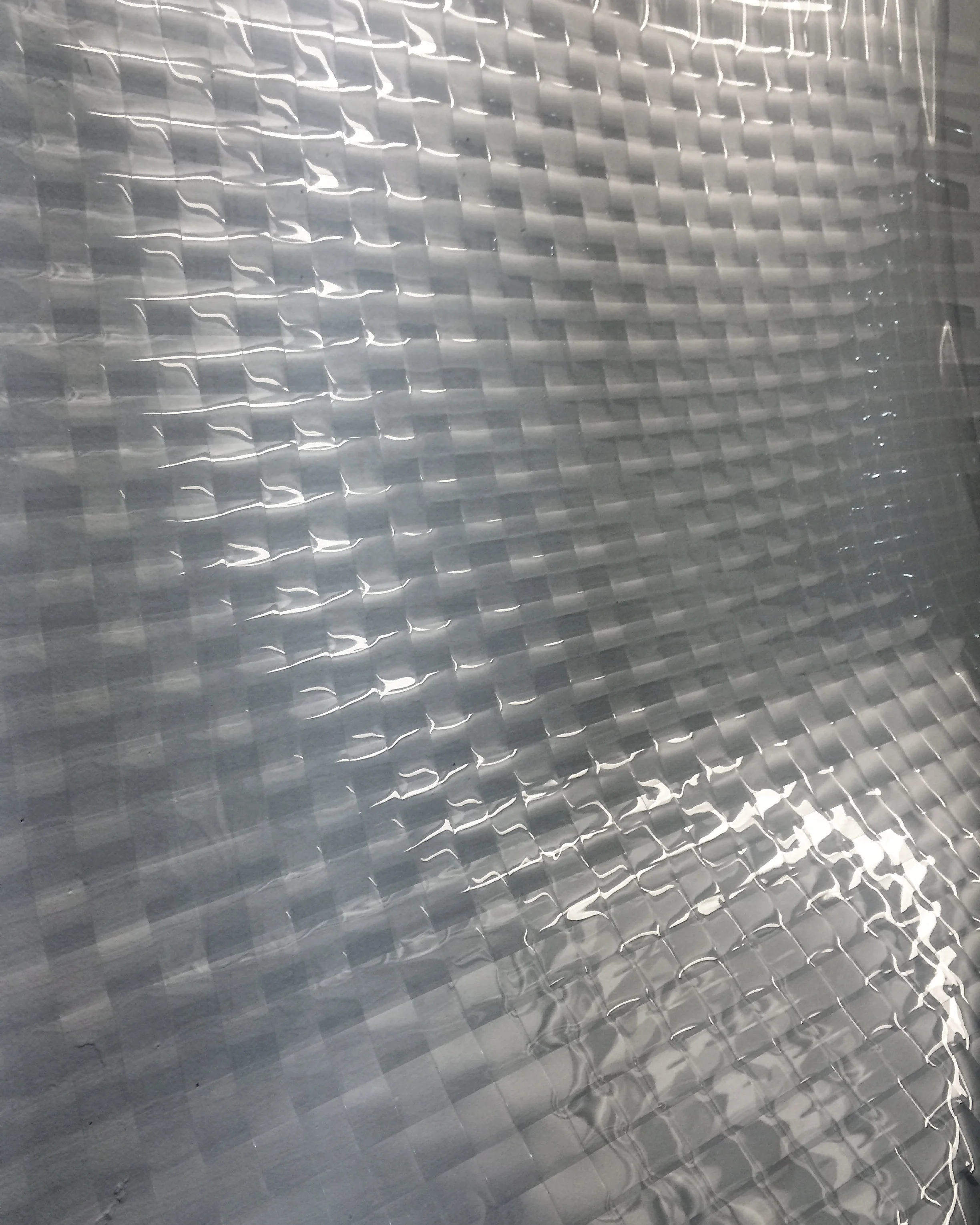


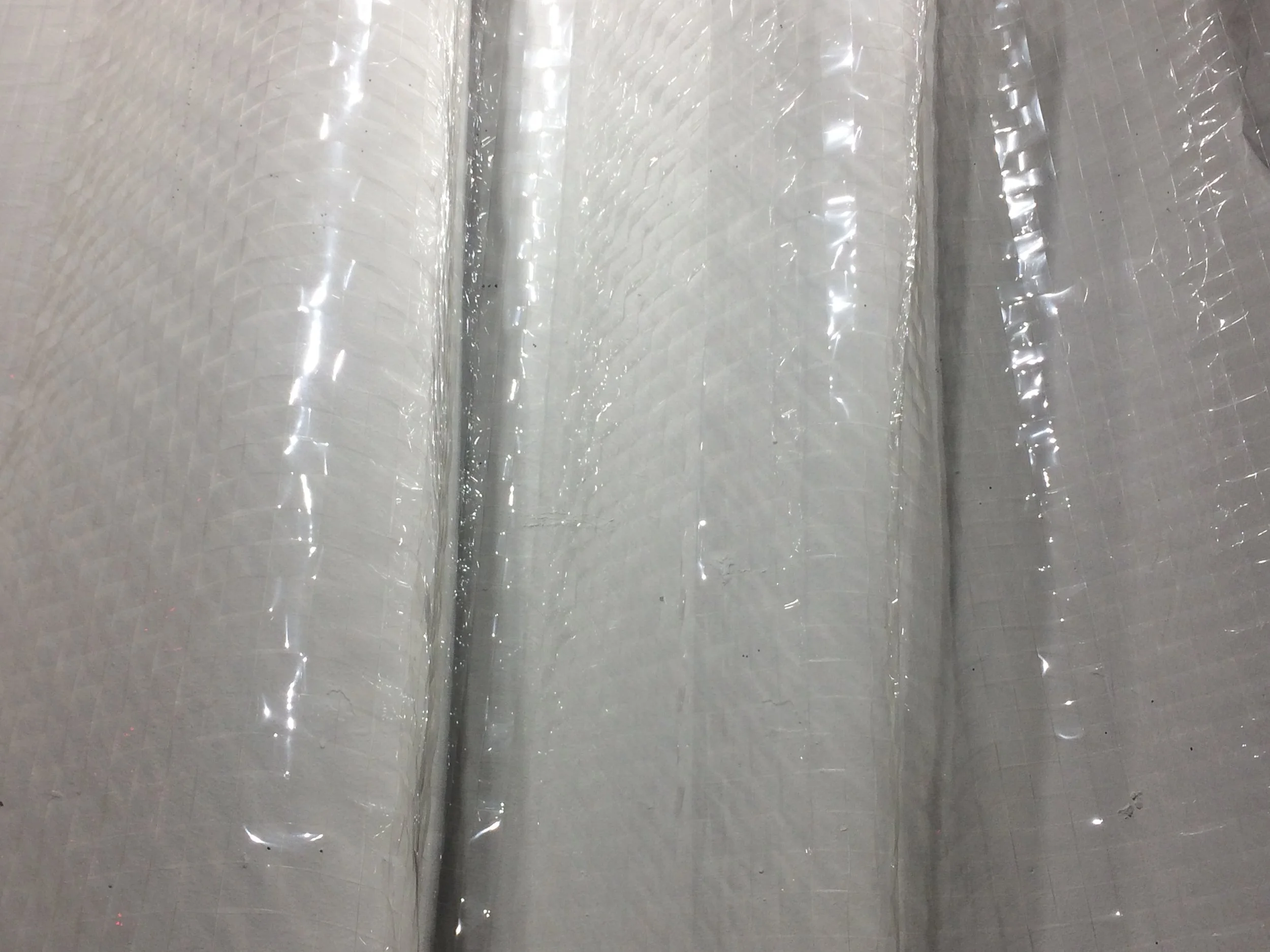
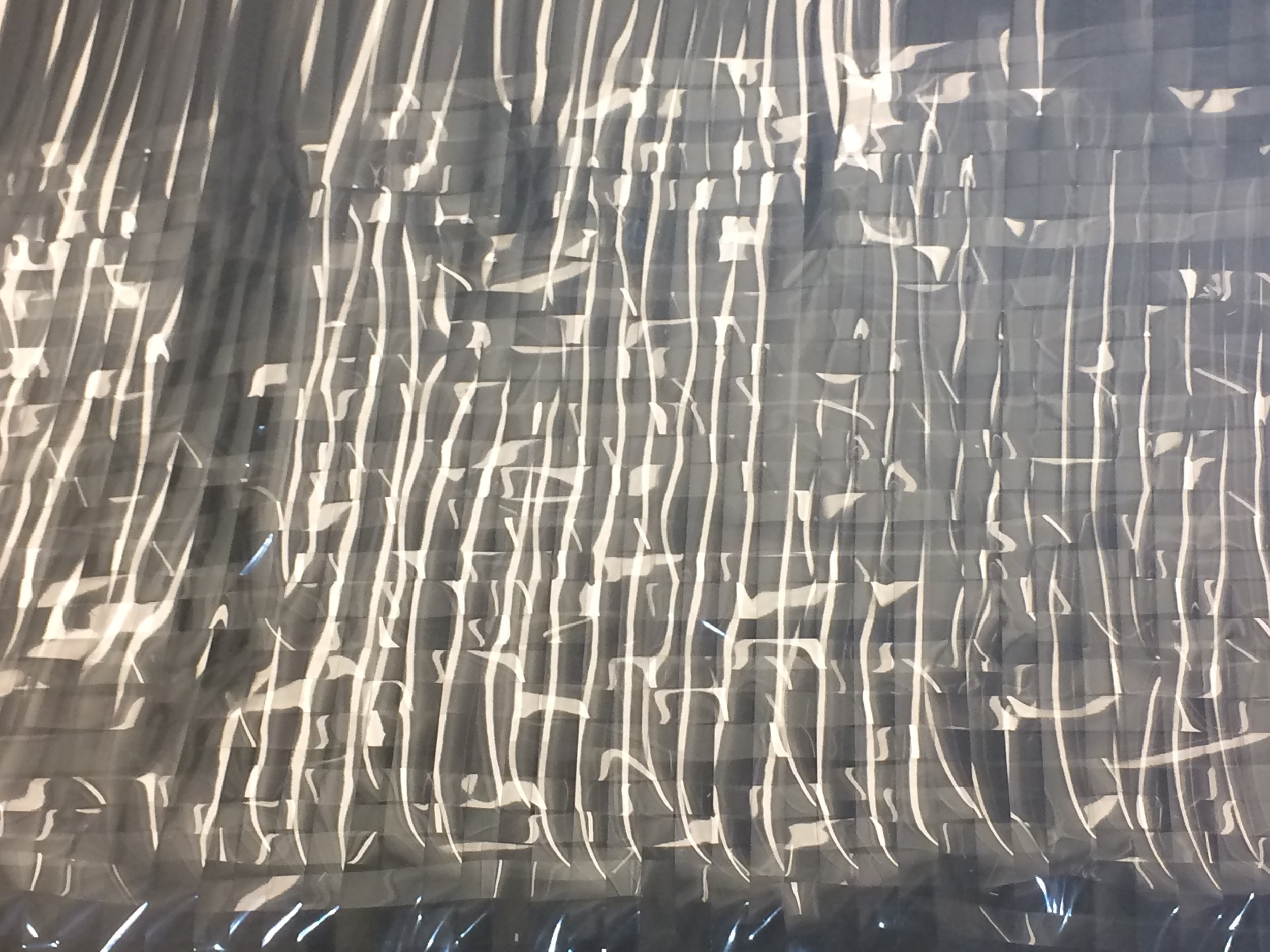
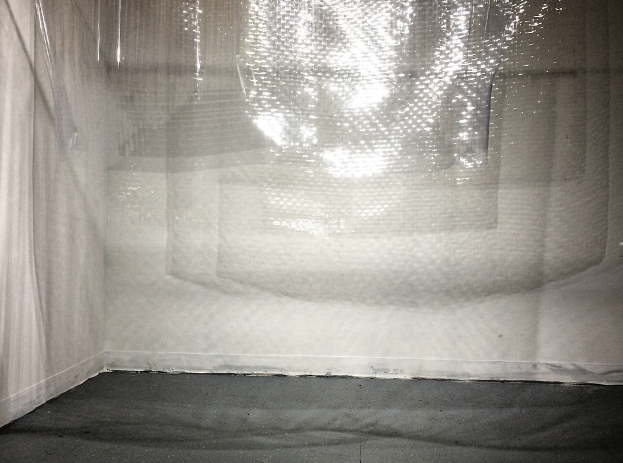
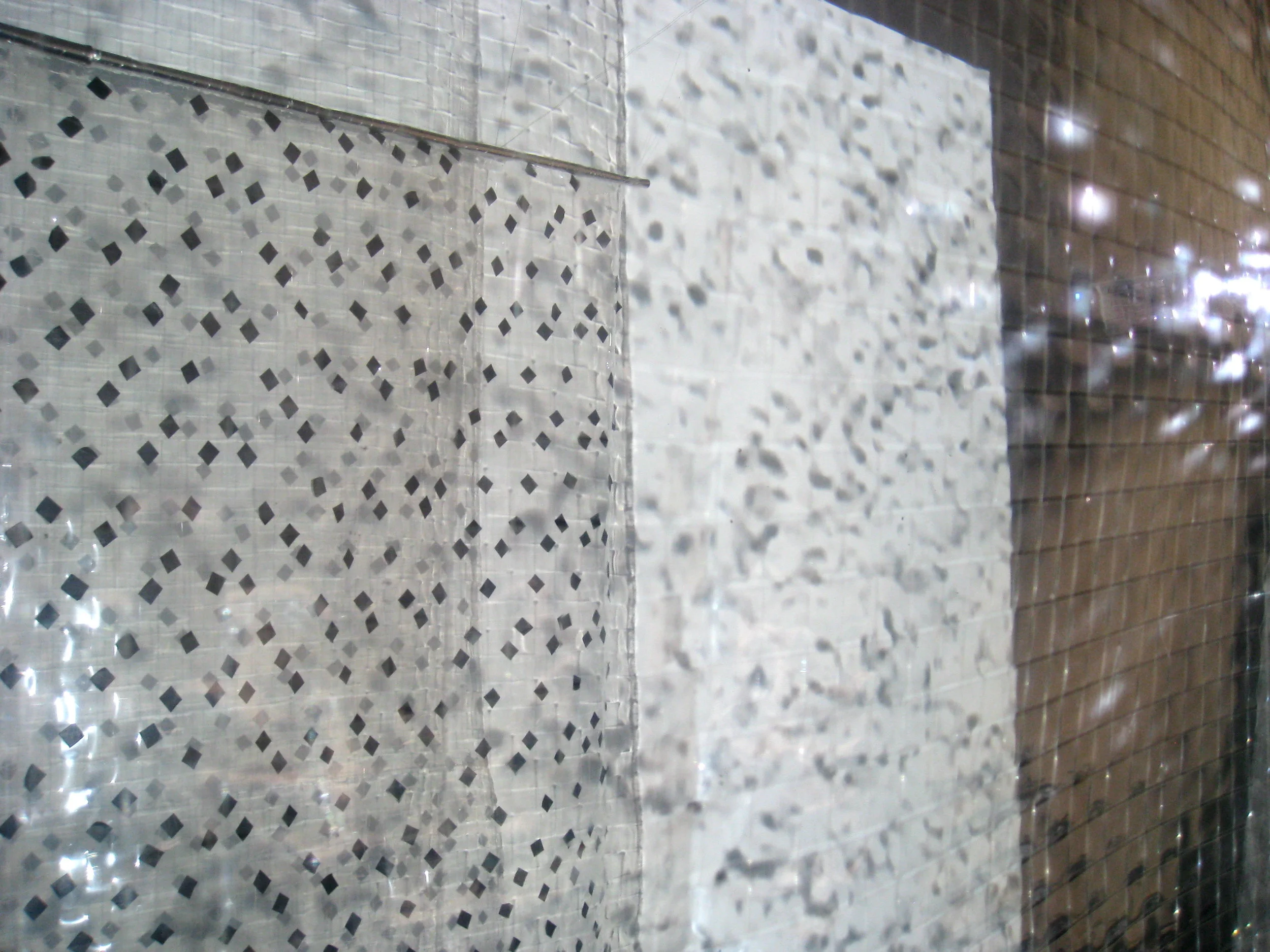
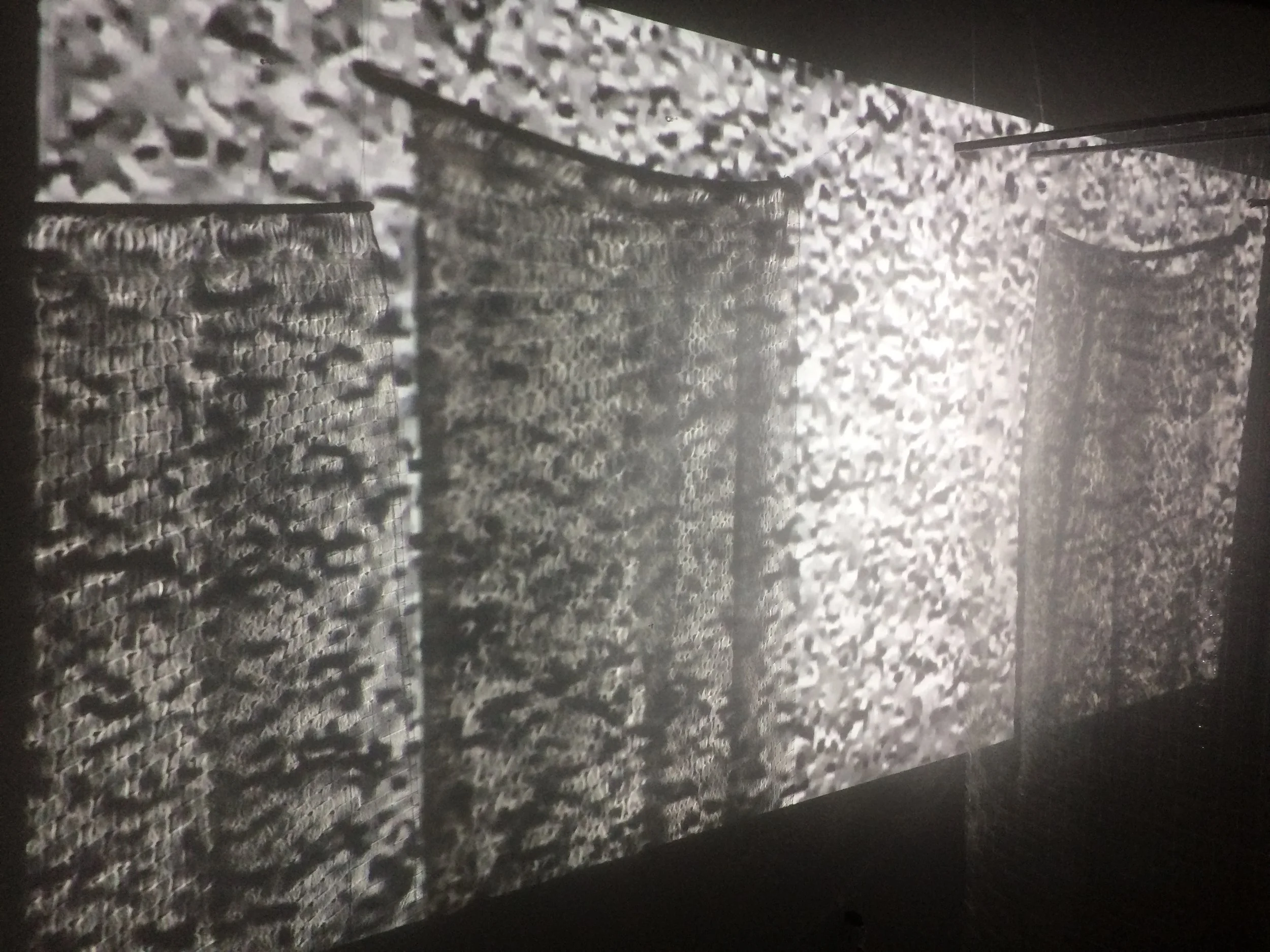

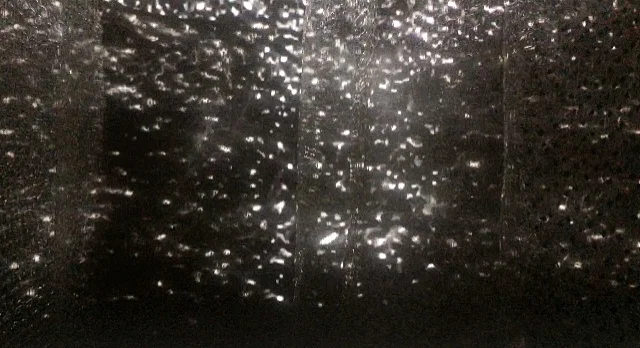
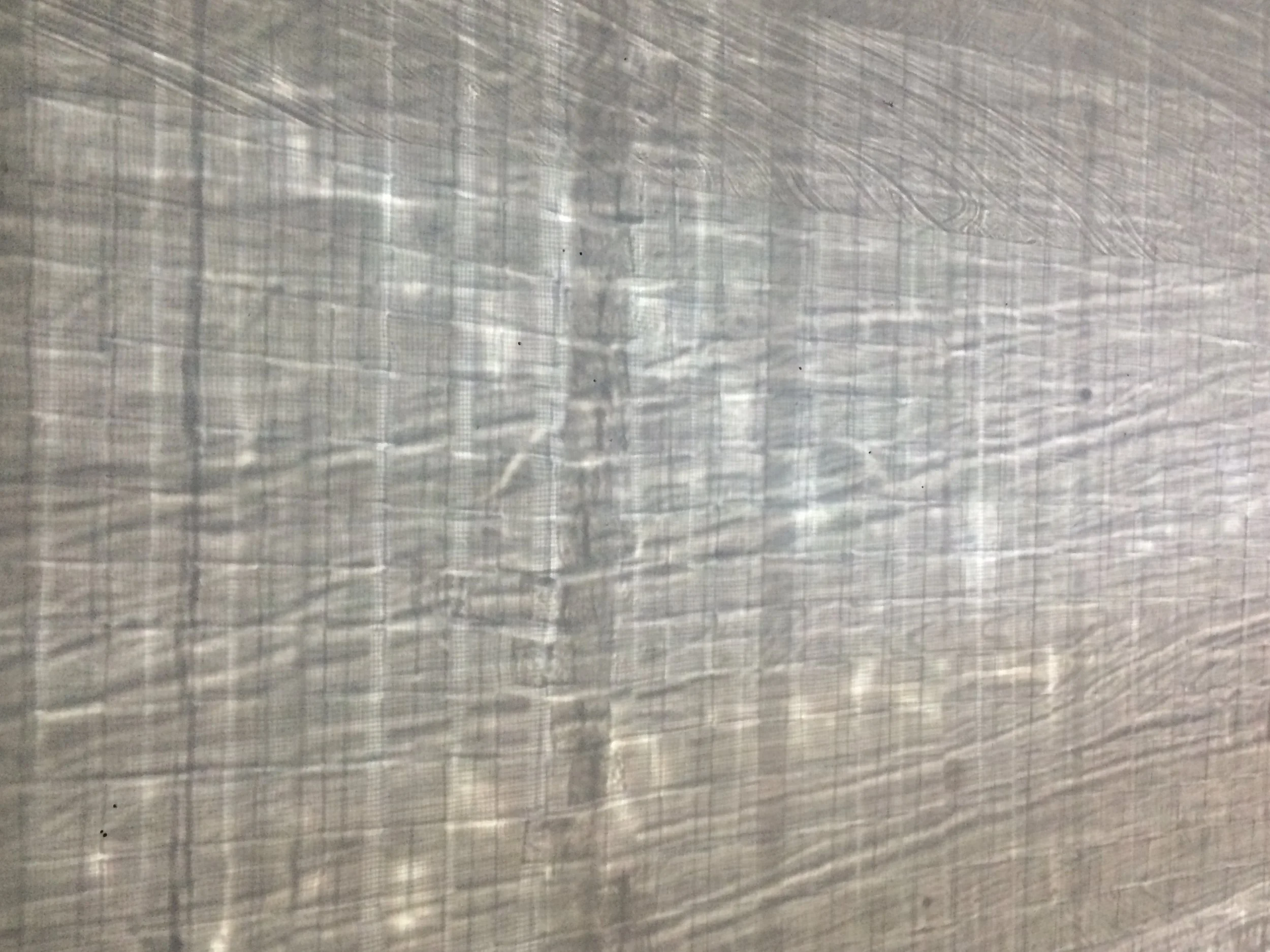
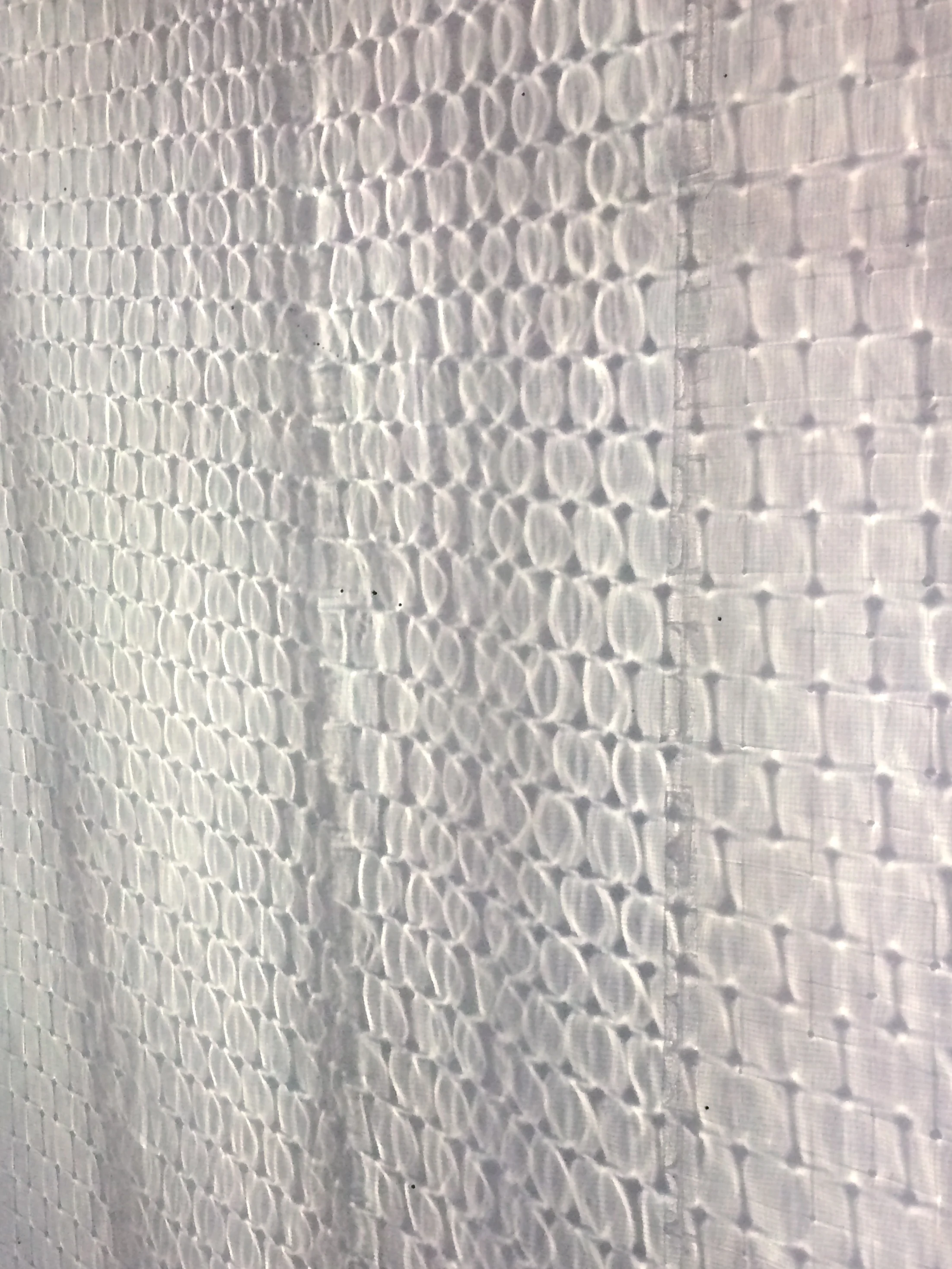





Patterns are inserted in the design and texture of weavings as well as in the composition of music. They flow in repetition and converse with symmetry, regulated by measurements to arrange a sequence of loops. My woven tapestries are inspired by music I produce. A computer program provides a visual representation of the order in which notes are played by a MIDI keyboard. Translating these minimal patterns into grid paper drawings, they provide directions, similar to how sheet music is read, to inform the weaving pattern of the acetate fabric. Using this method to create tapestries with sound patterns, I aim to provide a visual representation of sound, bridging audible and visual sequences of patterns together.
The material I weave with, acetate, is used in both photographic film and magnetic tape as the blank material which images and sound are recorded onto. It is coated on the outer layer of dubplates, which are the sample records made before getting vinyl copies. On the dubplate, acetate is used as the physical element which music is read from the needle. The patterns of sound are translated onto the metal plate, and with each spin of the disc the sound begins to fade and becomes less detectable.
The action of weaving is my way of providing an open-ended allusion to time and measuring moments by repeating a gesture. As my hands dance over one another while stringing the material through itself, my attention is submerged in these motions. The material multiplies in units over a growing surface. Each unit duplicates and accumulates through the over under sequence of joining the warp and the weft. I create codes for weaving which reveal and conceal by translating patterns through different mediums.